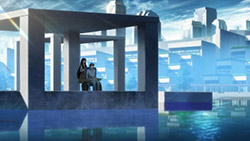 |
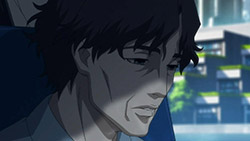 |
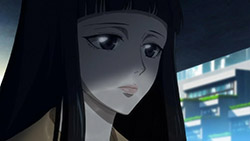 |
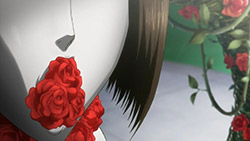 |
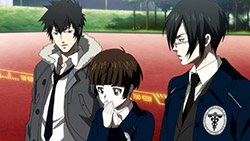 |
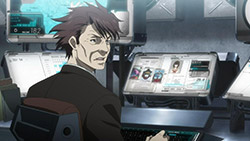 |
 |
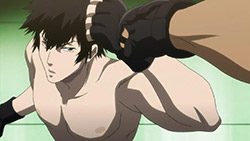 |
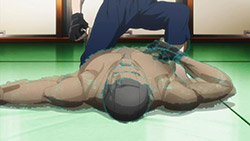 |
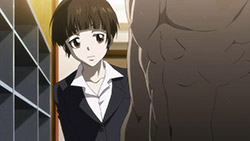 |
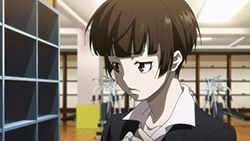 |
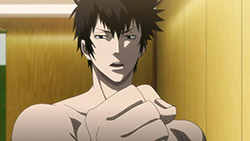 |
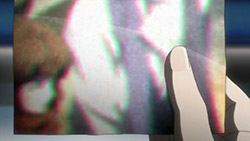 |
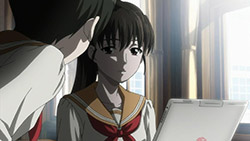 |
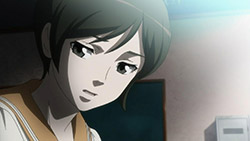 |
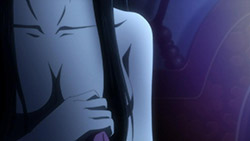 |
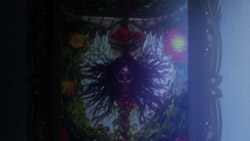 |
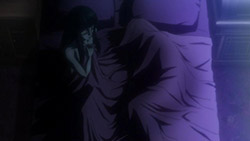 |
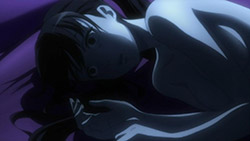 |
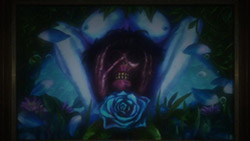 |
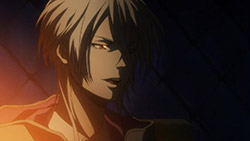 |
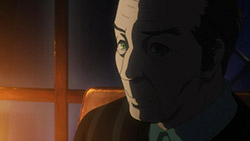 |
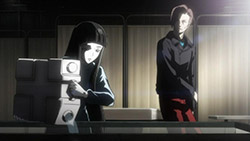 |
 |
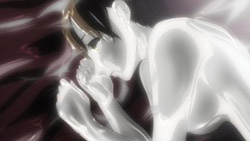 |
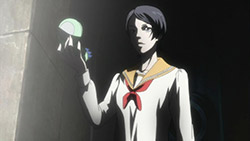 |
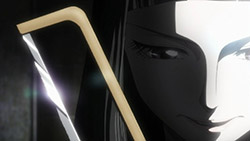 |
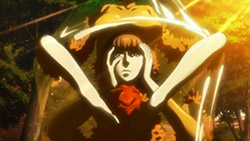 |
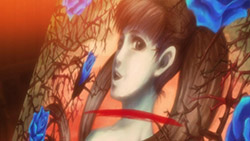 |
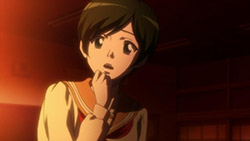 |
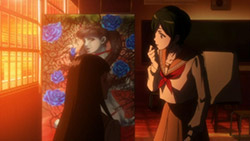 |
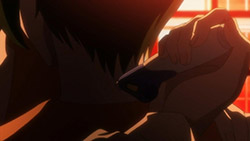 |
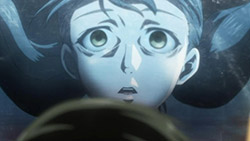 |
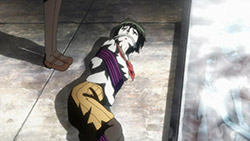 |
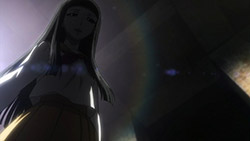 |
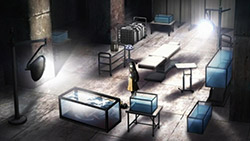 |
「紫蘭の花言葉」 (Shiran no Hanakotoba)
“Symbolism of Bletilla Striata”
Ouryou Rikako redefines what it means to be a ladykiller – and a society that is able to give its citizens a life free of stress and suffering redefines what it means to be human.
When the series began, some people might have felt that a system with crime coefficients and Psycho-Pass hues wasn’t necessarily a detrimental addition to society, at least with the exception of the whole guilty-before-proven-innocent aspect. It could be argued that such a system would be merely akin to a genetic screening for any health risks and susceptibilities, only encompassing the realm of mental health as well.
So far we’ve seen a society employing this system having very low crime levels – so low that in a city as large and dense as a Tokyo one hundred years in the future, the Ministry of Welfare’s Public Safety Bureau appears that it only needs to have one Inspector on duty at a time, who covers a precinct that stretches from the ultra-dense city center all the way to factories located in its countryside outskirts. We also see in this episode a society that through advanced technology has given a path for its non-latent criminals a life free of any despair, stress, and suffering. What then is exactly the price to be paid for a system and a society centered completely on crime coefficients, Psycho-Pass hue assessments, and aptitude rankings?
The most obvious costs to humanity comes from a society that whether through aptitude rankings or crime coefficients, segregates people and in essence, determines the path that they must take for the rest of their lives. We saw this most clearly in the last episode how such a society prevents its citizens from reaching their full potential or following their true dreams. Is this where the costs end however? Are they worth paying for a realization of the closest place to a nirvana on Earth?
The Buddhist and Hindu concept of nirvana is essentially a state of being that is free of suffering – but also free from desire, and sense of self. In some ways, it’s similar to the society that is being portrayed by PSYCHO-PASS in that it can also be considered as something that might not be inherently beneficial to humanity and nihilistic in nature. However, there exists a fundamental difference between the two concepts. To attain nirvana and the cessation of suffering, the journey comes from within each person. It’s an internal process that comes by following a spiritual journey such as the Noble Eightfold Path. In contrast, the society of PSYCHO-PASS is one where the cessation of suffering and stress comes from outside each person. It comes from external sources such as medical anti-stress treatments and care.
This externalized path to a life free of stress and suffering incurs a biological cost that humanity must pay. These treatments leave minds so devoid of stimulation that their autonomic nervous system, the system that governs the human body’s ‘fight-or-flight’ (stress) responses, has atrophied from disuse and the body falls into a vegetative state that is neither living nor dead – a condition the show has aptly termed “eustress deficiency cerebral infarction”. Instead of a stroke (cerebral infarction) occurring from a lack of oxygen, it’s one that occurs from a lack of eustress, which is a name for the moderate or normal psychological stress that is considered to be beneficial for people to experience. Nirvana has no such biological cost as far as we can surmise.
There is also a cost to humanity that is more fundamental in nature and essentially redefines what it means to be human. It’s exemplified by Makishima’s message that “Life is nothing but suffering.” and Rikako’s paraphrasing Danish philosopher Søren Kierkegaard that “Unless you know despair, you cannot know hope.” Basically, if one believes that what differentiates us from animals and makes us human is defined in some part by our capability to feel suffering, despair, and stress, then a society free of all these emotions essentially diminishes and redefines what it means to be human. If one does not feel suffering, can one feel joy? If one does not feel despair, can one feel hope? Even with all the truly disturbing and macabre murders that are occurring in PSYCHO-PASS and all the issues surrounding the segregation of latent-criminals, it is this cost to humanity that most clearly says that this is without a doubt a dystopia in every sense of the word.
Of course, all this information has to be kept hidden from the general populace, but then how did Makishima learn of the brain condition and of the declining life expectancy statistics? A very faint but plausible possibility is that armed with this knowledge and the ideology that was born from it, his true intention is that of a twisted revolutionary – he desires to bring Sibyl and the society that centers on it tumbling into the fires of anarchy. It’s also possible that Makishima, like Choe Guseong, cannot stomach some or all of the methods that are best able to sow the seeds of mischief and chaos that will “shake up society”, which is why he has given his resources to the most unstable and psychopathic of characters that are able to convey the message that “Life is nothing but suffering”. It’s a message that has proven to be effective, as its capability to cause downfall Kougami can attest to.
In these past few episodes, the pervasive effects of Sibyl’s system on society have continued to be detailed, and as a result, a grim picture has begun forming of PSYCHO-PASS’s futuristic vision of Tokyo. It is a picture that is kept hidden and unquestioned to many of the dystopia’s denizens – because if they knew of the steep toll humanity must pay in exchange for their society, many would deem the price to be unacceptable.
- Creativity and artistry still exists in this society, but seems like most are only done for fame and fortune rather than for the sake of art itself and the emotions that can come from art.
- They say that there is a thin line separating genius from insanity, and Rikako might be a prime example of someone falling completely on the wrong side of the line. While her father was a man with strong morals, he unfortunately only passed on some of his artistic talent to her. While it is a provocative and creative step in bringing the message her father wished to convey through his artwork onto a more public stage through sculpture, but to do it with actual bodies of your classmates and to relish hacking them apart is disturbing on so many levels. . Not to mention who knows exactly what she’s been doing with the naked bodies while sharing a bed with them. It doesn’t feel like mere revenge, and calling her a psychopath would be putting it extremely lightly. Also, is Rikako’s current painting the sculpture she has planned for her third “prank”? More importantly, with Kawarazaki Kagami (Kusumi Aiko) now in trouble, will Shimotsuki Mika (Sakura Ayane) end up coming to her rescue?
- Kougami might be one of the best protagonists of the season. We already knew he has many of the intellectual abilities required of a great detective, but now we know he also possesses physical abilities like an excellent proficiency in hand to hand combat. And to top it off, we find out Kougami is not one to regret and blame external factors for his demotion to Enforcer, but instead blames himself for not being able to solve Special Case 102. This is a guy who mans up and takes responsibility for his own actions. Oh and don’t forget, he has a wry wit as well, with all his amusing teasing (or subtle flirting) of Tsunemori. She was checking out his impressive physique after all…
- Full-length images: 02, 03, 13, 17, 18, 25.

Yes that was good episode desu.
Somehow… Not really. It wasn’t as enjoyable as it should be.
to much phylosophy for you to handle?! well me too i have to watched it 3 times to get all the idea !
Even though I have to admit that some of those “paintings” and “sculptures” bring chills down my spine, I just can’t resist watching every single moment of this mind blowing and amazing anime. I guess this aninme produces the eustress that I need to keep going on in this brutal last stretch of the fall university semester I’m having. Anyways, thanks a lot for blogging this Verdant, it’s always nice to read your write-ups on this anime 🙂
I enjoyed the episode nonetheless but I really hope the man Makishima was talking to has some kind of importance because that whole segment seemed like the story we’d already been shown being told to us in words just in case we didn’t understand. I felt it really would have been better if the new things he revealed there were also made part of a story instead of being told straight up.
Also the crime seems like it’ll be resolved pretty easily since it seems obvious that Rikako isn’t an experienced/skilled killer and is making herself obviously suspicious so what I’m interested in is what Kougami will learn from this event that ties to the greater plot.
Kougami, stop distracting everyone from the story with your magnificent abs :D.
Looking forward to when Kougami and Shogo meet :).
Kougami shinya and Makishima Shogo = Skamoto yuuji and Kirishima shoujo in next life
A reverse male gaze – how rare! Guess Tsunemori is kinda a pervert after all. ^^
TQ
She is lighthead due to her epic cuteness and intelligent
The evil things that happen in this anime bring me happiness.
Yes. XD
Just to add, this new schoolgirl pyscho is hot.
psycho*
All the more reason to be depressed at the thought of her getting blown into a lump of minced meat by the Dominators like other psychopaths before.
… I’m sad now.
I think Yayoi will be the one who shoot or kanemori
The end of this episode reminded me of that one discussion between the Architect and Neo (?) in the Matrix on when the machines in the beginning gave humans the perfect world for their minds to exist but we instinctually rejected it because something, just something is wrong with the prospect of being in a “perfect” world without any hardships.
It’s like adversity is a key part of being human, or for ANY living being for that matter since encountering any form of stimuli weather it be pleasure or pain encourages evolution, sure there is a limit to how much stress something can handle but once endured it only makes it stronger and carries its traits to another generation, perhaps this repression of stress actually INDUCED stress in other individuals who thought that adhering to rules that Sybil sets violates their rights?
A system that removes ALL negative stimulus is a temporary answer, but a FALSE one.
Sybil seems good in concept but the long time repercussions are far too terrifying to think about… seeing humanity die out by just no longer having the “will” to live with no goals in mind just existing, heck they may outright follow the panda and lose the urge to seek-out a partner to start a family and be at risk of dying out altogether
This show continues to impress on how deep and complex society really is when you try to change just ONE aspect of it, removing violence…
Love Rikako’s theme.
Hope is a terrible thing onto itself though.
Greek mythology had that right.
The fact that you hope for something even when there’s no possibility of it happen, but you wait, and try to get it just to fail again and again, because you have hope. Every time you fail you suffer. When if you just accept it and forget it maybe you’d be happier.
Kougami is a new gary stu for edgy hipsters, set up to be sacrificed in the end, lel.
Predictable reaction, hipsters.
Social commentary combined with incredibly creepy imagery? The Urobutcher is on a roll. Its quite interesting how he uses really creepy people as a mouthpiece for his thoughts on the human condition.
It seems to me that Rikako has just compromised herself. From what I can tell her MO is to seduce her victim, engage in hot lesbian sex, kill her in her sleep then chop them up and plastinate them for her art pieces. Her latest kidnapping though, was a definitely a spur of the moment thing (because she wants an audience?). Not to mention the other girlfriend knows she sent her to Rikako so she just left behind a trail. I’m hoping she can be saved, but this is Gen so I’m not holding my breath.
after all that’s read and said, i still have one thing to say: i’m so shipping kougami and tsunemori!
this episode in itself is at its best for me! the ideas are really interesting, and it’s becoming BEST show for the season for me, yes i relish this kind of stuff.
survival of the fittest, except here, there’s no king, only sibyl.
i am still hoping tsunemori shows more of how she is branded a genius, cos so far she’s not doing much deduction, she’s only fed with the answers. well, i won’t say she’s not doing her job, since most of what she had to do – is just be a watchdog >.<
It’d be nice if the girl survives….
But this is Urobutcher, so probably not 😛
I’m thinking the same thing as well
I hope the girl lives, I mean if anything she’ll probably force her to watch her as she turns her dead friend into art. And as soon as she displays her outside then she’ll most likely kill her when she gets back. Because apparently I kept on thinking those two statues were the pigtail girl but apparenlty they’re other girls…she just keeps bodies in storage for when she can use them…though I don’t know what her friend is going to do if she finds out? I’m hoping that somehow she’ll tie into Akane’s team because unless she does, it basically makes Oso academy the main storyline of this ark with Akane, Kogami, etc. as the background characters.
Well. Rikako is probably going to kidnap Akane. They have discussed how Kogami’s last partner was made into a victim far too much for it to not lead to anything juicy. Kogami saving Akane from something similar would serve as redemption in a way.
Or you never know, Kougami may get foolish in his haste and be the one being rescued. It could go either way. But I definitely agree, it’s been referred to too much for something not to happen in that respect.
I wouldn’t say Nirvana doesn’t have a cost. Though show’s antagonist could be seen as someone who rejects the very concept of Nirvana. A life without suffering is not life at all. Its more akin to death. Without suffering there is no desire and vice versa.
they are in the darkside . Nirvana has a cost – super difficult to attain after all.
Akane is obviously oggling at Kougami’s abs.
I must say there’s something about Sakamoto Maaya’s soothing voice that makes characters like Rikako seducing yet creepy at the same time. (Having just watched the new Evangelion in cinema, her performance as Mari was a contrast to that of Rikako. )
I smirked a little when Akane stared at Kougami’s body, lol.
I still can’t get this out of my head whenever Makushima’s name is mentioned.
http://www.youtube.com/watch?v=KB6o6FAgVyI
So Kougami is going for “most GAR character” of the animeseason 2012?
Neine, it’s either Akatsuki Ousawa from Haguure Yuusha, Emiya Kiritsugu, or Jojo/Dio.
Not even close. Its seems GAR is starting to be a misunderstood term. True GAR requires that you either have inhuman resilience and defiance and/or the ability the scream your head of loudly and as hammy as possible. Either way, GAR is inappropriate for a series written by Urobuchi (Rider in F/Z was just an exception to the rule).
Observe what true GAR is.
Dear Sybryl,
Today I have learn that the more you are in the light the longer your shadow get after all Darkside is within yourself!
Incredible episode. The quote in the beginning of the episode by Ouryou can be talked about for paragraphs. Beethoven’s 9th in this episode is awesome as well.
Makishima kind of reminds me of the Joker from the Batman franchise. While they’re actions and intellects aren’t similar, they both try to change people’s social values, and they both try to do disrupt society and introduce anarchy to the people. Perhaps it’s just me, but I see a resemblance (which isn’t a bad thing).
Great post as usual, I really loved reading it. I had to pause several times while watching this episode to make sure I got each character’s philosophy, yet it seems like I missed a lot because your post clarified so much for me. :]
“Some men aren’t looking for anything logical..they can’t be bought, bulied, reasoned, or negotiated with….some men just want to watch the world burn…..”
so i kinda disagree..Joker doesn’t give a shit about the society…he has already given up on it…(did u hear his past stories when he stuck his razor on his victims’ mouths?)
The episode itself was well-executed (i think Urobochi succeeded in getting his idea across), but it also proved all the more that this show wasn’t exactly like i thought it would when i read its synopsis (or watched its first episode)…i think it’s a matter of adjusting your expectations i guess….
and it’s about time that the series should stop with the Yuri vibes and the exploitations of Kogami’s abs…it’s getting old…
and GET SOME ACTION GOING, PLEAAAASSSSEEEEE!!
I am not limiting myself to Nolan’s trilogy. I based my comparison on the DC comics as well.
The Joker doesn’t care about society much, that is perhaps true. But he wishes to disrupt it (so technically, he does care). He wishes to control the human mind, create anarchy. He wants people to be free, in a literal perspective. Therefore, I see a similarity. It’s not about whether they care or don’t care about society. It’s their various attempts at tearing it down, to change people’s morals and bringing out their inner desires. That is where I find a connection.
When it comes for action you have to think of it this way. Two episodes of Psycho-Pass would equal one hour episode of CSI “whatever” or Law and Order (cause without commercials those are around 40 min long). So within one ep of those TV shows how much action is actually seen? Not much. So basically take 2 eps of Psycho Pass and if it doesn’t have a lot of action in it then its just going by the standard of most detective shows, I mean the main focus is on the case and from time-to-time character developement, and then the shooting (talking about CSI stuff)…of course its been two eps and we havent seen a person blown up yet…they better make up for this in the next ep…or whenever they decide to catch her. Just pointing this out there for those who are being frustrated with not much Action being shown.
True indeed, i thought that same thing when they showed how Shogo works and how intelligent he is, and it is indeed the case that the Joker and Shogo have different viewpoints/philosophies but overall their methods and approach to “shaking the society” are very similar.
I think U2’s Hold Me, Thrill Me, Kiss Me, Kill Me seems to be a very appropriate theme song for this.
And goddamn if this doesn’t top Saya no Uta.
Beethoven’s 9th in the BG was truly epic.. Loving this show.
Somehow or rather, with Urobochi… I can’t help it that the theme of “life is fragile” and also morality screams out loudly.
Psycho Pass is becoming harder and harder to watch, can’t watch it while I’m eating, can’t watch it while I’m drunk and relaxing. xP
And now for a wild theory:
Earth in Psycho-Pass = Earth in Aria
Akari escaped from a “perfect” society on Earth when she went to Aqua after all.
Damn impressive episode, the creepiness factor is as high as ever but also the true depth of the story is starting to show .. Sybil -as many have guessed- is far from the perfect system it was shown to be, but i’m sure no one expected the negatives of Sybil system removing stress from people’s life could be as extreme as eventually turning people into vegetable-like creatures.
Kogami again shows more of his fighting skills and “assets” (and Tsunemori was happy to oblige), i’m really impressed but Kogami’s acceptance of his failure and focusing on what’s important (solving the case that got his friend and enforcer killed), he is indeed a very interesting character, and his superb physical strength will surely come in handy when faced with people who don’t trigger Dominators (i doubt Shogo has a high psycho-pass), and if i remember correctly he showed of some excellent fighting skills in the 1st episode prologue scene when he fought that masked soldier (i think that was a flash-forward to events that will happen in the future .. since he technically haven’t met Shogo in the flesh till now).
Then we have the crazy Rikako, to say she creeps the hell out of me is an understatement .. WTH seriously is wrong with her, i can understand what her father was doing even if i’m not really into that type of art .. i do find a guilty pleasure in viewing it, a sort of catharsis (which i think what her father was aiming for), but his daughter really is 100 times far more creepy than her father’s drawings .. i can’t even begin to imagine what goes into her mind when she does what she does (to her school mates of all people) .. phew .. somehow i’m glad i can’t imagine that.
Expanding upon Rikako’s work it reminds me of the movie House of Wax (which had extremely disturbing unsettling scenes (rather than just using jump scares like most other horror movies) this movie really gets under your skin, the whole idea of being waxed alive and turned into living art is as disturbing as much as what Rikako is doing here in PP, i wonder i this whole “waxing people alive” thing was based on a true criminal like the Texas chainsaw massacre, that would up the creepiness factor of the movie ten folds.
Also, for people who would like to see someone like Rikako’s father in real-life .. someone who is very talented but crosses the line with his art in terms of how disturbing it is … try Hiroaki Samura who made the “Blade of the Immortal” manga, his art books (like “Brute Love”) can be very VERY disturbing on so many levels, but becasue of his drawing talent, impressive style and the catharsis effect of the shock factor his drawings cause it can also be a guilty pleasure .. a very guilt one that is .. sometimes i wonder what the heck was he thinking while drawing this .. then again .. i surely don’t want to know (he is a perfect example of the disconnect between the actual artist and the image his works portrays .. if you see him or hear about him is a pretty normal person with very excellent drawing skills .. look at his disturbing art .. and you get all sorts of ideas about his sanity and imagine he would be some sort of homicidal criminal or lunatic XD).
The conversation between Shogo and that old guy with eyes-wide-open (for some reason he creeps me out, i think he is either blind or not-human at all .. hint hint .. see the holograph covered robot in the Kogami fight), the way Shogo explained why he is doing what he is doing is very interesting and useful in making him a deep and engrossing villain not just some random evil guy no.99 … i totally agree with his message (showing the people how the Sybil system isn’t as perfect as it was made to be) but i’m totally against his brutal murderous methods, there are other ways to create shock factor and “shake the society” other than giving your resources over to homicidal maniacs like Rikako.
I made a mistake by reading a Psycho-Pass spoiler for the next episode on tumblr…-_-…I hope it doesn’t happen the way it was written because then I would be both not surprised and sad…because being suprised is a good thing about this show, you don’t know what stuff they will come up with next.
Oh well, we get philosophy, art , science and politics all mixed up with murder!
And Tsunemori sure likes some good manservice heh…
I actuall want Mika the cautious/investigative to help Enforcers in hunting down Rikako. I doubt that she will save her friend from the cruel pen of Urobutcher…
Kougami’s abs were so distracting I forgot what this episode was about